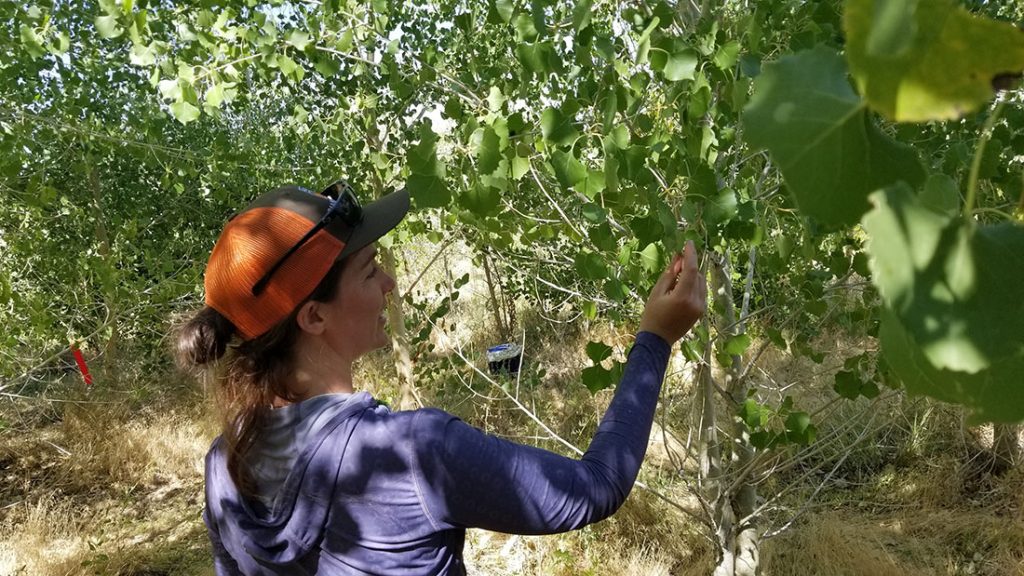NAU continued its streak of graduate students winning one of the most prestigious fellowships in the country this week.
Iris Garthwaite, a second-year master’s student in environmental sciences and policy, was selected for the National Science Foundation’s Graduate Research Fellowship Program (GRFP). The award provides an annual stipend and an education allowance as well as mentoring and networking opportunities, all of which allow STEM graduate students to be more independent in their research and branch out from grant-funded projects.
NAU alumna Stephanie Gastelum, who is now a doctoral student at the University of Arizona, also was selected for the GRFP. Four NAU graduate students were selected for honorable mentions:
- Melissa Rose, Ph.D. in informatics and computing
- Emma Reich, Ph.D. in informatics and computing
- Emma Lathrop, Ph.D. in biology
- Zoe Marie Klein, master’s in environmental science and policy
“These fellowships are among the most significant ways that the NSF invests in the next generation of scientific talent,” said Vice President for Research Jason Wilder. “Students who are selected have identified exceptionally interesting and important questions to focus on as they pursue their graduate degrees, and these fellowships provide them with the financial resources to support and enhance their studies.”
Garthwaite, who is originally from the Bay Area, uses common gardens to study genetic diversity in Fremont cottonwoods and to characterize their responses to novel climates. Studying plants in extreme landscapes has become the major focus of her research as an undergraduate and in her two years at NAU.
“My passion for adventure and community service led me to live and work all around the globe,” she said. “I returned to the western U.S. to support community connections to local landscapes and learn about conservation.”
Amid the increasing effects of climate change, more landscapes are becoming extreme, or at least are changing enough that native species may struggle to adapt and can become endangered. Garthwaite’s research is aimed at understanding how to conserve cottonwood trees, which form riparian forests that can thrive along streams in the arid landscapes of the desert Southwest. This work matters in terms of maintaining biodiversity, enhancing restoration outcomes, and for the people who enjoy the shade of an old cottonwood tree on a hot day in the American West.
“Many people value the clear water, the cool shade and the biodiversity that these ribbons of green provide,” she said. “I want to produce research that can provide insights about how cottonwood trees will respond to a hotter, drier and more variable climate. If we understand that some trees from certain regions cope with periods of drought better than others, we may be able to use those trees in riparian restoration projects to enhance restoration outcomes.”
During her time at NAU, Garthwaite has worked as a research assistant for assistant professor Rebecca Best in the Center for Adaptable Western Landscapes. Best said Garthwaite’s love of plants and people makes her a valuable contributor to conservation science. She is skilled at articulating questions, devising new methods to address those questions and finding ways to co-create learning opportunities with community partners.
“She is also deeply committed to leadership that connects people from diverse backgrounds to experiences in science and in nature,” Best said. “Iris put together a fantastic original research proposal as well as a plan to provide outdoor education opportunities for kids in multiple Arizona communities and to collaborate with land managers. Given her background in education outside of academia, her excitement about science and her sensitivity to equity and access issues, she is going to have a really positive impact in her field in a lot of different ways.”
Garthwaite defends her master’s thesis next week. She will move onto a Ph.D. program in the fall.



